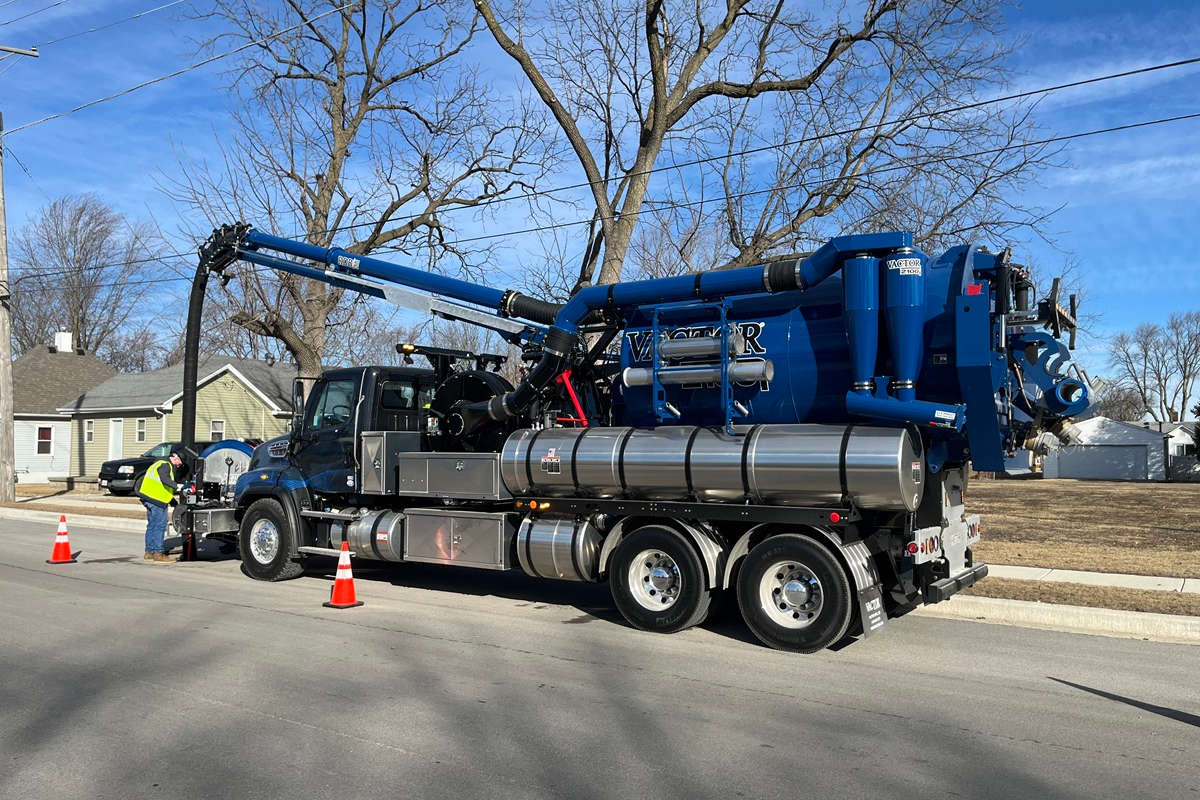HDD in Utility Construction
A Look at the Evolution of Horizontal Drilling with a Market Pioneer
The genesis of horizontal directional drilling (HDD) dates backs to the early 1960s where the new methodology was used for small road crossings for gas main installations in California. In 1971, when Titan Contractors Inc. completed a 500-ft river crossing using HDD that people began to really take notice.
From its basic beginnings HDD rigs have evolved with compact and large rigs allowing a broad range of installations, both in terms of diameter and distance. As the accuracy, reliability and availability of HDD has improved, its application has spread well beyond gas line installation – telephone, fiber, cable, electric, water, sewer.
Ditch Witch has been there for much of that history. The company saw HDD as an opportunity for its underground construction equipment line and has played a prominent role in HDD ever since.
To discuss the impact of HDD, its future and its role in utility construction, Utility Contractor contacted Seth Matthesen, Ditch Witch HDD Category Manager.
How long has Ditch Witch been involved in the drilling market? How did it get started? What are some of the company’s major developments in the field?
The Ditch Witch organization has been involved in the HDD market for many, many years, beginning with the purchase of intellectual property for what is now known in the HDD industry as the slant-faced method of boring. This technology was the first used to effectively install pipe and cable by a small-scale, fluid-assisted boring unit. This launched the birth of the first Jet Trac, a utility class HDD rig from the Ditch Witch organization. The unit was sold worldwide through the Ditch Witch family of dealerships, beginning in the early 1990s. By today’s standards the drill unit was crude, but it functioned similarly to HDD boring systems that are still being used currently.
The Ditch Witch organization was originally – and still is – the only equipment manufacturer in the underground construction industry that designed and produced its own brand of tracking and locating electronics. In 1988, Subsite Electronics branched off as its own brand – under The Charles Machine Works entity – with a full line of locating products. The products provide the flexibility and reliability needed to locate and identify buried services, tracking of directional boring tools, map and planning directional boring jobs, and location of power and communication cable faults.
How would you rate the strength of the HDD market? Why?
The market is very strong today. Underground telecommunications projects to increase bandwidth continue to drive demand for HDD advancements, specifically in the compact HDD market. We anticipate growth in the compact HDD market for at least three to five more years as the fiber buildout continues. The growth has also led to a stream of HDD advances within the Ditch Witch organization. For instance, our customer feedback and market growth drove us to develop our newest HDD models, the innovative AT40 and JT20XP direction drills. They are designed specifically to help equip utility contractors with the latest technology for optimal drilling productivity in a range of challenging conditions.
The diversity and variety of drill technology also makes the HDD market strong. Today, there are varying sizes of drills to meet the needs of many different jobsites globally. The advancement of supplemental technologies has also helped the market. For example, mud mixing, electronics/tracking units and downhole tools help assist drills on various HDD jobsites. Contractors are now able to bore longer distances, through larger diameters and varying soil conditions more efficiently and productively than they could in the past.
What are the primary drivers impacting the HDD market? How is this evolving?
Technology that boosts the productivity of HDD equipment continues to be popular in the market. To decrease the potential for downtime and to reduce costs, many customers have taken interest in equipment for mud management and obstacle avoidance with reliable locators and other electronics.
In previous years, contractors gained a smaller footprint with compact HDD rigs, but lost much of the power needed for difficult ground conditions. In preparation for growth in the mid-size drill market, Ditch Witch continues to design horizontal directional drills that provide the necessary power while emphasizing operator comfort and a reduced overall footprint.
What do you see as the major issues facing the HDD market?
We continue to hear about the need for trained HDD operators. A consistent need for operators in the underground construction market has helped the current workforce become more familiar with HDD equipment, improving how efficiently they work. Since that market is showing no signs of slowing, there is constant demand for novice operators, and they need to get up to speed quickly. Training methods that appeal to the next generation of operators are helping fill that need – such as the Ditch Witch virtual reality (VR) HDD simulator and online training courses. The simulator offers trainees a virtual drilling environment to replicate a real jobsite, from urban to rural settings. The simulator allows the user to sit in a virtual operator station and using real joystick control technology to operate the equipment.
In addition, growing environmental concerns and federal regulations are impacting the HDD market. Some regulations require drilling mud to be cleaned and disposed of properly, but extracting and disposing of drilling mud is a time-consuming and costly task for many contractors. Costs quickly add up if enough water is not available on-site. Advanced technology and fluid recycling systems allow contractors to recycle HDD fluid, such as the Ditch Witch MR90. This unit removes large cuttings, rocks, sand and fine particles, allowing the cleaned fluids to be reused throughout the drilling process.
For utility contractors, water and sewer installations are a big part of their business. How much do water and sewer installations impact the HDD market?
In many ways, the water and sewer markets are no different than other markets when it comes to the need to utilize HDD methods. Areas of environmental concerns, limited access or just roadway crossings, HDD is a preferred method to combat these changing conditions.
What innovations are impacting the HDD market? What areas are emerging?
As contractors continue to focus on increasing efficiency and productivity, new technologies are available that improve awareness of the bore path and activity with the directional drill. The Ditch Witch AT40 directional drill offers an optimized operator interface, which includes two 7-in. LED screens for better visibility into all machine functions, diagnostics and bore tracking information. Integrated into the new AT40 drills is the new Subsite Electronics Commander 7 HDD guidance display. Using the ScoutView software app, operators can upload a bore plan to the Commander 7 display so they can monitor the bore live, log bore data, and display real-time bore information, such as approaching an obstacle.
How is Ditch Witch involved with NUCA? What are the benefits?
The Ditch Witch organization has been involved with NUCA for many years, and various staff have served on multiple committees throughout the years, including the HDD committee from 2011 to present and Vice Chair of the NUCA Convention from 2014 – 2015. In addition, Ditch Witch is a Bronze Sponsor and a convention attendee since 2009 to present. Tags: Ditch Witch, HDD, March/April 2018 Print Issue





